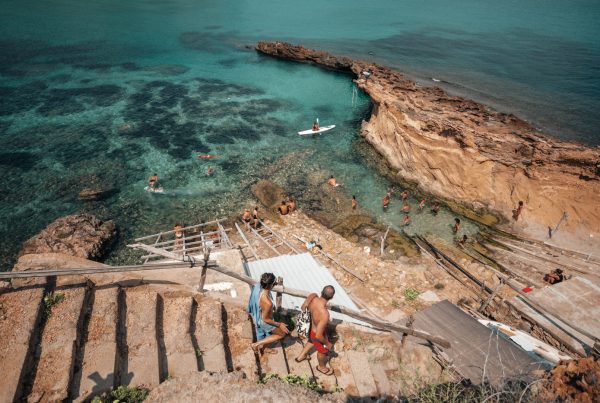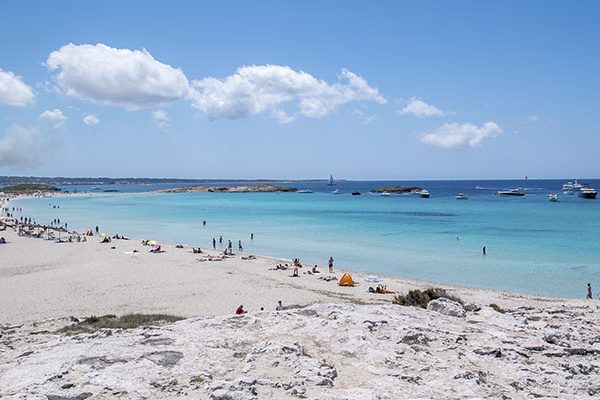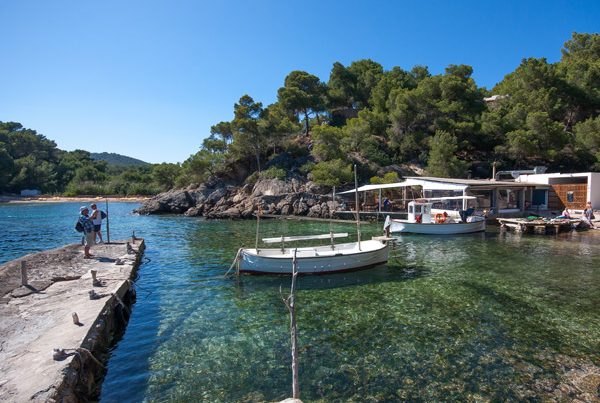Today on our post we are going to highlight some of the most important facts and features surrounding the marvelous rural churches found in the Sant Joan de Labritja municipality. Ibiza’s churches always have interesting stories attached to them, stories which lead us far back into the island’s intriguing heritage.
Let’s start at the county seat, the village of Sant Joan de Labritja, where we find a church built in stark contrast to Ibiza’s rural architectural tradition. Curiously, it follows a layout common to mainland churches, with a single rectangular nave sporting seven side chapels, and the parochial residence built onto the outside of the church itself. Construction was completed in 1770, although not without heated and ongoing disagreement between the locals and the ecclesiastic hierarchy. The crux of the dispute lay in the fact that, many years prior, the forebears of the region’s farmers had already built a chapel (on the site of the present-day church) to save themselves the long trip, either to Santa Eularia or Sant Miquel, to hear Mass every Sunday. Many years later, the bishopric decided to raise a new house of worship but chose an alternate site as opposed to the favored “Hermitage of Milà” (as it was called). The uproar was calamitous. The bishopric never agreed with the farmers’ conviction to enlarge their chapel into a church, but was powerless to impose its will on the feisty populace. At the end of the day, they were the very laborers whose hands had to build the church.
Our second stop will be the beautiful fortified church overlooking the village of Sant Miquel de Balansat.
Standing in front of it, our first impression is that we are looking at a citadel. This is altogether characteristic of Ibiza’s churches, which were built not only to minister to the spiritual needs of the population, but to protect it from invasions and unwelcome visitors. Quite uniquely, however, the Sant Miquel church is the only one in Ibiza whose layout is in the form of a Latin cross. Naturally, it is situated at the top of a hill (Puig de Missa) and affords unparalleled views of the countryside below and the sea beyond.
Originally built in the 15th century, an exciting discovery was recently made when some 19th century frescoes were uncovered in a side chapel in the course of renovation.
Also interesting is the fact that, when the side chapels were added several centuries later, the parochial residence was rebuilt on top of the domed roof to better preserve the priest from potential pirate attacks. One particularly telling piece of architectural history is that the massive front doors, which gave directly onto the nave, were for the exclusive use of men, while the side door was used by women.
Ibiza as it really was.
So long for this time. See you next week, here at the Can Planells blog.




